The Tasmanian tiger, also known as the thylacine, is one of the most fascinating and enigmatic creatures in history. Despite being declared extinct in the 20th century, its unique features, intriguing history, and the ongoing search for its existence capture the imagination of many. In this article, we’ll explore why the Tasmanian tiger is so special and significant.
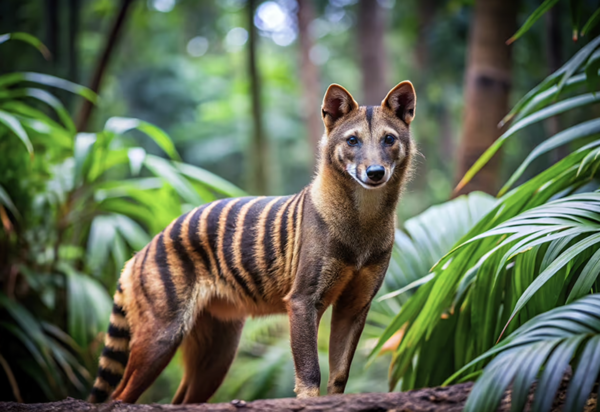
Distinct Appearance: The Tasmanian tiger was not a tiger at all, but a marsupial. It had a slender body, a head resembling a dog, and distinctive stripes across its back and tail, which gave it the nickname "tiger."
Size and Build: Adult thylacines could grow up to 4 feet long, excluding their tail, and weighed around 30 to 60 pounds. Their powerful jaws and sharp teeth made them effective hunters.
Indigenous Folklore: The thylacine holds a special place in the stories and beliefs of the Indigenous Tasmanian people. It was often depicted in their art and is part of their cultural heritage.
Modern Fascination: The mystery surrounding its extinction has led to various documentaries, books, and films. People are drawn to its story and the possibility that it may still exist in the wild.
Causes of Extinction: The Tasmanian tiger was declared extinct in the 1930s, primarily due to hunting, habitat loss, and the introduction of invasive species like dogs. Understanding these factors is crucial for modern conservation efforts.
Conservation Awareness: The thylacine’s story serves as a reminder of the fragility of ecosystems and the importance of protecting endangered species. It highlights the need for sustainable practices and the consequences of human actions on wildlife.
Ongoing Sightings: Despite its official extinction, there have been numerous reported sightings of the Tasmanian tiger over the years. Enthusiasts and researchers continue to explore Tasmania in hopes of finding evidence of its existence.
Scientific Interest: Advances in technology, including DNA analysis and environmental DNA (eDNA) sampling, have sparked new interest in the possibility of locating the thylacine. Researchers are eager to gather data and learn more about its history.
Role in Ecosystems: As a top predator, the Tasmanian tiger played an essential role in its ecosystem, helping to maintain the balance of species. Its absence has likely had a ripple effect on local wildlife.
Importance of Biodiversity: The thylacine’s story underscores the importance of biodiversity and the need to preserve all species, as each one plays a vital role in its environment.
The Tasmanian tiger is special for many reasons, from its unique characteristics and cultural significance to the lessons learned from its extinction. As we continue to explore the possibility of its existence and understand the impact of its absence, the thylacine remains a powerful symbol of wildlife conservation and the importance of protecting our planet's biodiversity. Whether it exists in the wild or not, the legacy of the Tasmanian tiger endures, captivating the hearts and minds of people around the world.
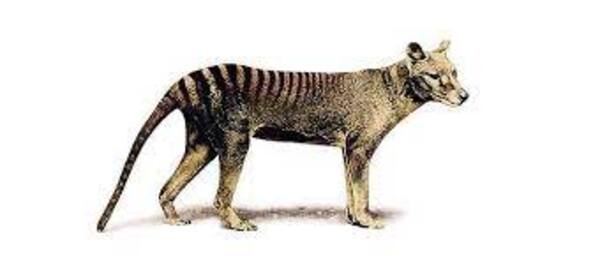
The extinction of the Tasmanian tiger, or thylacine, is a complex issue influenced by several interrelated factors. Here are the main causes that contributed to its demise:
Bounty Hunting: In the late 19th and early 20th centuries, the Tasmanian government offered bounties for thylacines, encouraging widespread hunting. Farmers viewed them as threats to livestock, particularly sheep, and sought to eliminate them.
Cultural Perception: The thylacine was often portrayed as a dangerous predator, leading to a cultural bias against the species. This perception fueled further hunting and extermination efforts.
Land Clearing: The expansion of agriculture and development in Tasmania resulted in significant habitat destruction. Forests and grasslands were cleared for farming, reducing the thylacine’s natural habitat and food sources.
Urbanization: As towns and cities expanded, thylacine populations became increasingly isolated and fragmented, making it difficult for them to find mates and sustain healthy populations.
Introduction of Dogs: The arrival of domestic dogs in Australia posed a significant threat to thylacines. Dogs competed for food and likely preyed on thylacine pups, contributing to population decline.
Other Invasive Species: Other introduced species, such as foxes and feral cats, further complicated the ecological balance, competing for the same prey and impacting the thylacine's hunting success.
Epidemics: While less documented, it is believed that diseases introduced by domestic animals could have impacted thylacine populations, further stressing an already vulnerable species.
Slow Reproduction: Thylacines had low reproductive rates, typically giving birth to only two to four pups at a time. This slow rate of population growth made it challenging for the species to recover from declines caused by hunting and habitat loss.
No Conservation Measures: At the time of its decline, there were few, if any, conservation measures in place to protect the thylacine. By the time the species was recognized as endangered, it was too late to implement effective protections.
Last Known Individuals: The last known wild thylacines were spotted in the early 1930s, and the last captive thylacine died in 1936 in a Hobart zoo. The combination of hunting, habitat destruction, and competition led to their rapid decline.
The extinction of the Tasmanian tiger was the result of a combination of human activities, habitat destruction, competition from invasive species, and biological factors. Understanding these causes is essential for modern conservation efforts, highlighting the need to protect endangered species and their habitats to prevent similar fates for other wildlife. The story of the thylacine serves as a poignant reminder of the fragility of ecosystems and the impact of human actions on biodiversity.
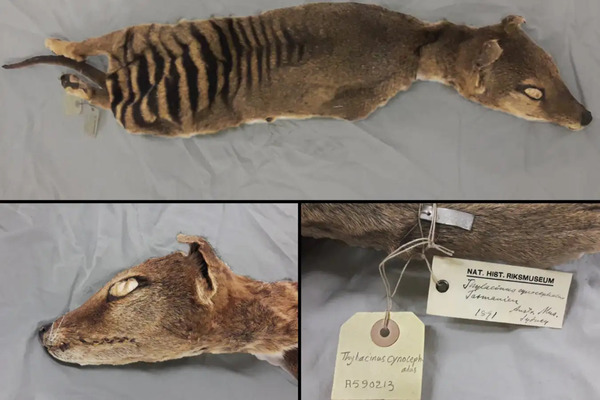
The closest living relative to the Tasmanian tiger, or thylacine, is the Tasmanian devil (Sarcophilus harrisii). While they are quite different in appearance and behavior, both belong to the same family of marsupials, known as Dasyuridae. Here’s a closer look at their relationship:
Family: Both the Tasmanian tiger and the Tasmanian devil are part of the Dasyuridae family. This family includes various species of small to medium-sized carnivorous marsupials.
Order: They belong to the order Dasyuromorphia, which encompasses all dasyurid marsupials.
Common Ancestor: The thylacine and the Tasmanian devil share a common ancestor that lived millions of years ago. This common ancestry explains some of the genetic similarities between the two species.
Adaptive Radiation: After the extinction of the thylacine, the Tasmanian devil adapted to occupy some of the ecological niches that the thylacine once filled.
Size and Appearance: The Tasmanian tiger was larger and had a distinct striped back, while the Tasmanian devil is smaller, stockier, and has a more robust build with a mostly black coat and white markings.
Diet and Behavior: While both are carnivorous, the Tasmanian devil is more scavenger-oriented, often feeding on carrion, whereas the thylacine was a more active hunter, preying on small to medium-sized mammals.
Endangerment: The Tasmanian devil is currently classified as endangered, primarily due to the spread of Devil Facial Tumor Disease (DFTD), a transmissible cancer that has significantly impacted its population. Conservation efforts are ongoing to protect and recover the species.
Thylacine's Extinction: The thylacine was declared extinct in the 1930s, largely due to hunting, habitat loss, and competition from introduced species.
Cultural Importance: Both species hold cultural significance in Tasmania and are often featured in stories and folklore. The Tasmanian devil, in particular, is well-known globally due to its portrayal in cartoons and popular media.
Ecological Roles: Both species play important roles in their ecosystems, with the Tasmanian devil contributing to scavenging and nutrient cycling.
The Tasmanian devil stands as the closest living relative to the Tasmanian tiger, showcasing the evolutionary history shared between these fascinating marsupials. Understanding their relationship helps highlight the importance of conservation efforts for the remaining species and provides insights into the ecological dynamics of Tasmania.
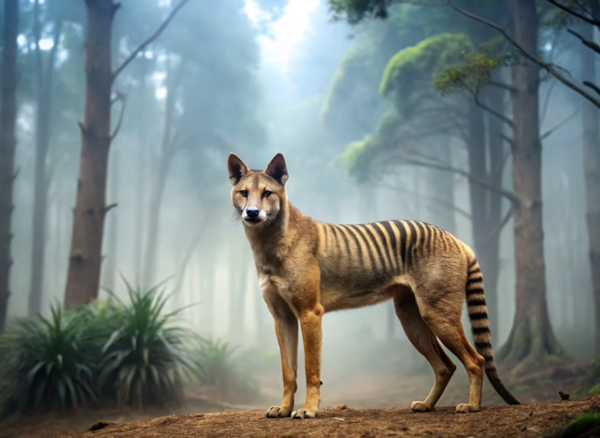
The idea of reviving the Tasmanian tiger, or thylacine, from extinction through scientific methods such as de-extinction or cloning raises important ethical, ecological, and scientific questions. Here’s a detailed exploration of this topic:
De-extinction Technologies: Advances in genetic engineering, including CRISPR and cloning techniques, have made it theoretically possible to revive extinct species. Scientists can extract DNA from preserved specimens and use it to create embryos with the hope of bringing back the thylacine.
Recent Successes: There have been successful efforts to bring back other species from extinction, such as the passenger pigeon and the woolly mammoth, using similar methods. These successes fuel hope for the thylacine's revival.
Ecosystem Impact: The thylacine once played a significant role in Tasmania’s ecosystem as a top predator. Reviving it could help restore ecological balance, but scientists must consider whether the ecosystem can support the thylacine today. The introduction of a species after a long absence could disrupt existing wildlife.
Loss of Habitat: Since the thylacine's extinction, much of its natural habitat has been altered or destroyed. Questions arise about whether sufficient and suitable habitat exists for a revived population.

Natural Extinction vs. Human Intervention: Some argue that extinction is a natural process, and reviving a species that humans contributed to extinguishing may not align with ecological ethics. Should we prioritize reviving one species over protecting existing endangered species?
Resource Allocation: Reviving the thylacine could divert funding and resources from conservation efforts aimed at protecting currently endangered species and habitats. The ethical dilemma here involves weighing the value of resurrecting a species against the pressing need to preserve those still in existence.
Cultural Significance: The thylacine holds a significant place in Tasmania's cultural heritage and mythology. Its revival could be seen as a way to reconnect with history and heritage, but it may also romanticize a past that includes human-induced extinction.
Public Interest and Awareness: The story of the thylacine has captured public imagination, and reviving it could raise awareness about biodiversity and conservation issues. However, it’s crucial to ensure that the focus doesn’t shift solely to de-extinction at the expense of current conservation efforts.
Genetic Insights: Attempting to revive the thylacine could provide valuable insights into genetics, evolution, and species adaptation. It could also improve techniques used for other conservation efforts.
Species Resilience: Studying the thylacine and its potential revival could help researchers understand species resilience and the impacts of environmental changes.
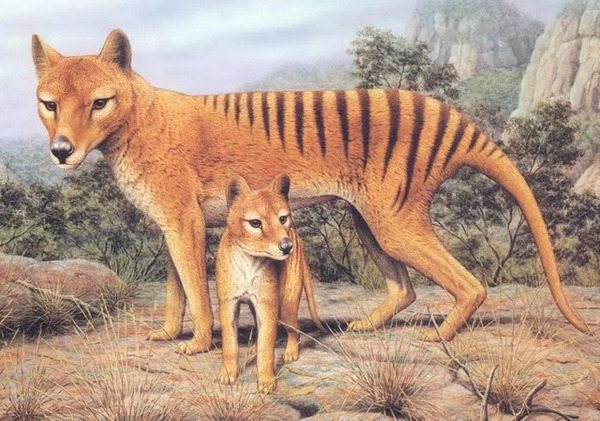
While the scientific possibility of reviving the Tasmanian tiger is fascinating and presents intriguing opportunities, it is fraught with ethical, ecological, and practical challenges. The decision to pursue such an endeavor should not only focus on the technological capabilities but also consider the broader implications for conservation, ecology, and our responsibilities towards both extinct and endangered species. Ultimately, the priority should be to protect existing biodiversity and habitats to ensure a balanced and thriving ecosystem for all species.
animal tags: Tasmanian-Tiger Thylacine
We created this article in conjunction with AI technology, then made sure it was fact-checked and edited by a Animals Top editor.